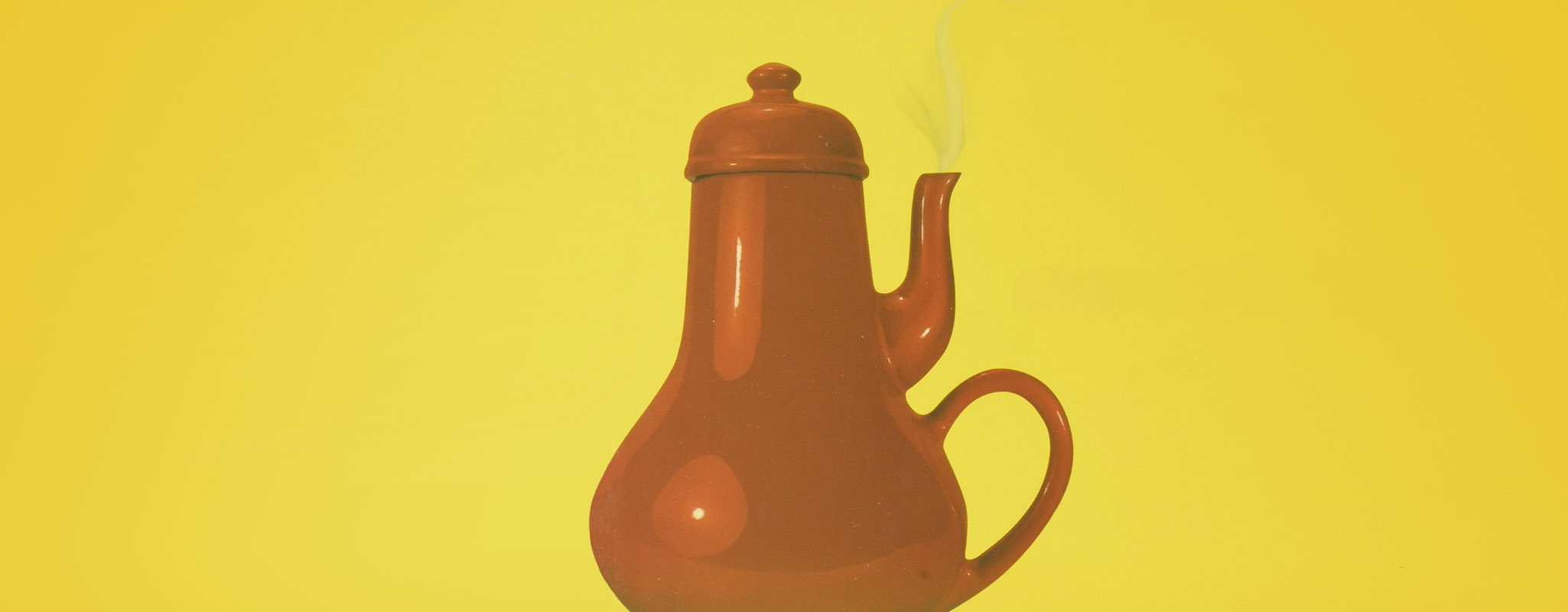Blog

The Design of Everyday Things: Chapters 1-3
A list of must-read books is always a contentious offering. Every year we get fresh judgments from critics listing essential tomes across a variety of disciplines.
Over time, many of the works on these lists drop away, culled by emergent scholarship and writing, and what remains are the true essentials: On the Origin of Species, The Wealth of Nations, The Turbo-Encabulator in Industry.
The field of software development is relatively new and the subfield of web development is newer, lacking the erosion of decades (centuries?) that would normally strip away a discipline’s outdated or invalidated writings to leave us with only the tested and validated works.
To what essential works can a web developer turn for guidance if they are serious about improving their acumen in their field? PINT’s book club seeks to answer that question.
There are lots of good books and articles on web development, and the field needs more serious analysis as it grows. Still, there are some well-tested works that continue to offer guidance to web practitioners, and we at PINT aim to give them some real study with a series of old-fashioned, read-and-talk (and snack) sessions.
First on the list is a book that, while principally concerned with design, offers lessons across all aspects of web development and touts that the purpose of building things is to make things usable by humans. I write, of course, of Don Norman’s The Design of Everyday Things.
We started our book club by tackling the first three chapters of the book, which offer plenty of laughable examples of terrible design, a walkthrough of practical psychology, and a readable illustration of the human mind’s interaction with the world.
Chapter 1: The Psychopathology of Everyday Things
The book club convened in our conference room around a hastily-assembled charcuterie board and lightly lubricated the conversation with delicious beverages. We started with the obvious topic of bad design, introduced by Norman in the subject with which he has become eponymous: Norman Doors. His trenchant dismantling of the ill-conceived designs of the simplest of devices spurred us to reflect on the many examples of bad design we confront on a daily basis.
We bewailed confusing light switches that don’t extinguish the bulbs in our stairway. We argued about the affordances of USB ports and Aeron chairs (PEBCAK was uttered) and took some pot shots at poor, old Windows 8. We asked why our restroom door has a confusing, dysfunctional electronic lock (with printed instructions) directly below a simple deadbolt (some understandable tittering and embarrassment around this one).
This entry point was a great way to get into the subject matter. Norman draws readers in by reflecting theory in the real world.
Affordance, Signifiers, and Mappings
The more Norman delineates the affordances, signifiers, and mappings of devices, the more easily we all recognized the baffling number of situations in which we are regularly placed by bad design. Simple examples like doors and scissors illustrate how we relate to objects and how good design goes unnoticed largely because it can be interpreted and used in no way other than that in which it was intended.
Norman details the difference between affordances and signifiers, specifying that the former describes actions that a user is capable of performing on an item and the latter indicates to the user how to use the item, the success of which can be qualified as the item’s “discoverability.”
Furthermore, the usability of these items is informed by the logical, spatial mapping of these items to the worldly manifestation of the user’s action, upon which he expands in the third chapter.
Affordances: describe actions that a user is capable of performing on an item
Signifiers: indicate to the user how to use the item
After using the item, Norman stresses the importance of feedback, so that the user understands that his or her action has had some effect on the world…. essentially, that the user interpreted the item’s signifiers appropriately, correctly mapped his or her action to the expected affordance of the item, and that his or her action affected a change on the real world. If all works as expected, the entire process can be considered confirmation of a now-assembled conceptual model of the item itself in the user’s mind.
The message was clear to our group, which specifically struggles with a medium that is constrained only by the limits afforded by a computing device, screen, and the internet. When we build for the web, our users can click or touch anywhere on the screen. Design flaws would lead them away from intended actions and goals and would result in frustration and abandonment.
Design flaws would lead them away from intended actions and goals and would result in frustration and abandonment.
Some attention was here given to our chosen project management software which, while excellent, still manages to subvert our expectations from time to time…c’est la vie.
Modern Web Example
To explain these concepts, Norman offers a modern web example of a restaurant application in which the physical device affords plenty of actions (specifically touch swipes in horizontal and vertical directions) but users fail to take advantage of the vertical affordances. A simple, corrective signifier in the form of a directional arrow solves the problem, in this case.
The case reminded us that, as web developers, we’re dealing with a canvas that has as many affordances as a desktop screen has pixels, and in cases such as a touchscreen or otherwise-affording devices, significantly more.
Chapter 2: The Psychology of Everyday Actions
Norman’s 2nd chapter was a bit more difficult to digest for our group, specifically since it deals with simplified, theoretical models of the relationship of human psychology to the real world.
Norman takes care to explain the varying depths of consciousness with which humans interact with the world, frequently acting at a subconscious level. Since we don’t have any behavioral experts at PINT (well, maybe one or two), we tend to take some of the maxims that this field renders for granted and ply our trade accordingly.
The main takeaways from this chapter for web development may be twofold:
1. Feedback
Humans require feedback in a time period that satisfies subconscious instincts (termed “Visceral” and “Behavioral” by Norman).
In physical devices, this is timed at 0.1 of a second, and web developers would do well to consider this expectation threshold. Delay or failure to provide feedback to action is bad design. Fortunately, we at PINT are devotees of the RAIL model, so I think we’re on the right (forgive the pun) track.
2. Flow
Creatives (and anyone seeking high performance) can benefit from Norman’s explanation of Csikszentmihalyi’s “Flow State,” often cited as the holy grail of productivity, especially in the development world.
Norman describes this state as resulting from work difficult enough to challenge but achievable enough to avoid frustration, hovering in the liminal space between the “Behavioral” and “Reflective” impulses of human psychology. The work satisfies some behavioral expectation of success feedback while the reflective conscious perceives high-level goal accomplishment, resulting in a virtuous cycle that allows people to achieve a meditative, focused state. It probably even cuts down on the caffeine intake, too.
Chapter 3: Knowledge in the Head and in the World
Chapter 3 provided more tangible benefits to our group given that the core concept assesses the value of knowledge in the mind as it relates to knowledge in the world. This is an idea that web practitioners can rally behind.
After all, as professionals who build and provide tools and resources for enhancing humans’ inherent capabilities, we know well that information lives both within our minds and without, a significant amount of which now exists on the internet. The efficient interaction of our web users with the information retrieval systems we build and integrate is our bread and butter.
If we effectively combine human users’ talents for short-term information retrieval and parsing with the near-limitless capacity of the web to store “knowledge in the world” (as termed by Norman), we’re doing our job well. In the case of one of our favorite information presentation tools, you worry about how to best organize and visualize data, we’ll provide the means to quickly retrieve, parse and display it.
This chapter brought some of Norman’s more abstract concepts back into the world-as-we-know-it and got the group excited for some of the practical applications of usability to come.
Since the cheese and cold cuts were getting warm and we all had to get to work the next day, we called it on the first session of the PINT book club discussion of The Design of Everyday Things and we’re looking forward to picking it up again in a couple of weeks. Join us again for Chapters 4 & 5!
Related Articles

The Purpose & Value of UX Research Part 2
The Value of UX Research In the previous article The Purpose & Value of UX Research Part 1, we discussed how a bad user experience...

The Purpose & Value of UX Research Part 1
The Purpose of UX Research In a growing digital world, technology has been integrated into our daily lives. From using our phone to check the...

Car Wash Karaoke
Our client Soapy Joe’s Car Wash is having a summer promotion called “Car Wash Karaoke” where people can win prizes for submitting videos of themselves...